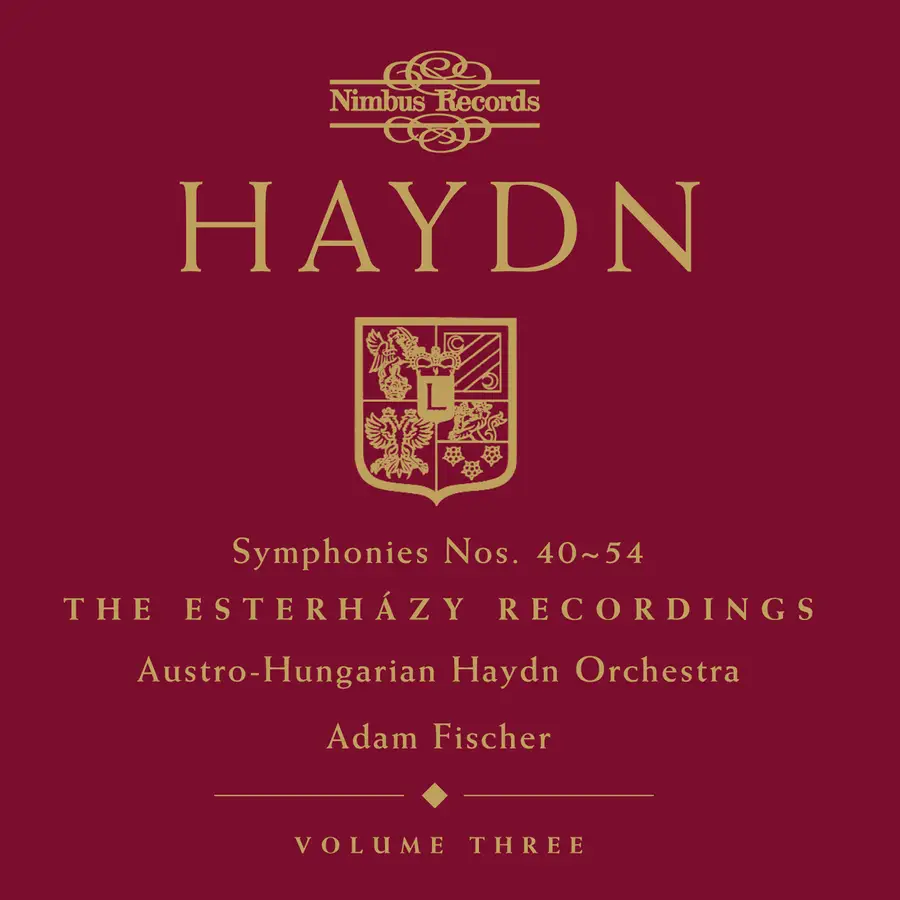With Symphonies 40 - 54, we see a few new elements to Haydn's composing.
Actually, I wish Symphony no. 40 were attached to the previous volume, for it is one of the last 'early' symphonies from the composer.
Regardless, there is a significant increase in symphonies set in minor keys, some taken from or intended for the theatre, and consequently, works fitting into Haydn's Stürm und Dräng period.
By the time I reach the 50s symphonies, I notice a clearer textures from Haydn and a general feeling of untroubled melodies and music making. And yet, the composer's music increases in complexity, even if he remains economical in what he provides the listener.
Personally, I notice a firmer satisfaction in these works with regards to the Sonata-Allegro form, fleshing out two contrasting themes with significant developments. It is in the segue to the recapitulation and codas where I hear a blurring and toying with form, leaving the listener on their toes as to where Haydn is going within his structures.
Otherwise, while Haydn is starting to leave behind the three-movement symphonies and older Sonata da Chiesa forms in this set of symphonies, on the other hand, we are gaining the composer's interest in slow introductions, plus more prevalent theme and variation forms.
And now for some Haydn by the numbers:
Employ
Prince Esterházy: All
Since I have already covered Hob. 107 & 108, I don't expect to use this category until Prince Esterházy dies and Haydn leaves the palace when it comes under new management.
Nicknames
Mercury (43)
Mourning (44)
Farewell (45)
Palindrome (47)
Maria Theresia (48)
The Passion (49)
Imperial (53)
The Farewell Symphony is easily one of Haydn's best-known 'named' symphony. The others on this list were created after the composer's lifetime, I assume to aid in sales or concert attendance, while some are related to regal visits and theatrical occasions.
Musically speaking, Haydn's use of a palindrome in the Minuet and Trio of No. 47 is a unique technique from the composer.
Movements
Four: All
This is another category which will probably die away. Some consider the final section of the Farewell Symphony as an 'extra' movement, but I will avoid such a label for now.
Opening Tempo
Fast: Fourteen
Slow: One (49)
Slow Intro: Three (50, 53, 54)
I could maybe add Symphony no. 42 as well, for its tempo marking states Moderato e maestoso. Otherwise, the Fast-Slow-Minuet-Fast is becoming standard, minus Symphony no. 49's older Sonata da Chiesa opening slow-movement form.
On the other hand, Haydn's love of slow introductions is beginning to make itself known as well.
Instruments
Flute: 41, 53, 54
Trumpet & Timpani: 41, 48, 50, 53, 54
Symphony no. 54 was later written with two flutes, and it is a remarkably different sound from the composer. While trumpet and timpani is usually reserved for the festive C-Major key, the duo also appears in Symphony no. 54 in G Major, again, added later by Haydn. In a creative move, timpani appears without its trumpet brethren in Symphony no. 53.
Initial Time Signatures & Tempo Markings
3/4: Eight
4/4: Five
2/4: Two
As to opening time signatures, it is getting increasingly difficult to track. This is mainly due to the slow introduction being added, which in each of the three symphonies where this occurs, changes key signature at the change of tempo. In Symphony no. 50, the 4/4 Adagio turns into a 3/4 Allegro, whereas Symphonies 53 & 54 go from a 3/4 slow tempo to a cut-time fast tempo.
Three first movements end up at a Vivace tempo, something I am still going to call a curiosity for now, and Symphony no. 54 begins and ends at a Presto, with only a slow introduction in its initial movement altering matters.
Of the slow movements, only six are marked at an Andante, one of Haydn's favored tempos in his early symphonies. A whopping eight are now set at some sort of Adagio, with two of the slow introductions also paced at an Adagio.
Presto and Allegro continue to be the key choices of final movement tempos. Two second movements and one final movement are in a theme and variations form. This aspect often plays with mode and tempo changes, so there are some differences there.
Title Key Signatures
Sharp: Seven
Flat: Five
C Major: Three
Minor Key: Four
Homotonal: Four
Truly, the only keys which seem strange are the ones in F minor and F-sharp minor, although the latter uses the same key signature as A Major. Since Haydn didn't write a symphony in A-flat Major, F minor seems odd, especially since it is only in the Trio where Haydn moves away to its parallel F Major for a brief time.
Length
Ádám Fischer usually acknowledges the first section repeat of a movement, but rarely the second section. I think there was one instance, the second-movement Adagio assai from Symphony no. 54, where Fischer eschews repeats altogether.
All this means is timing will vary from recording to recording depending on which conductor chooses to take which repeats, if any.
.



No comments:
Post a Comment